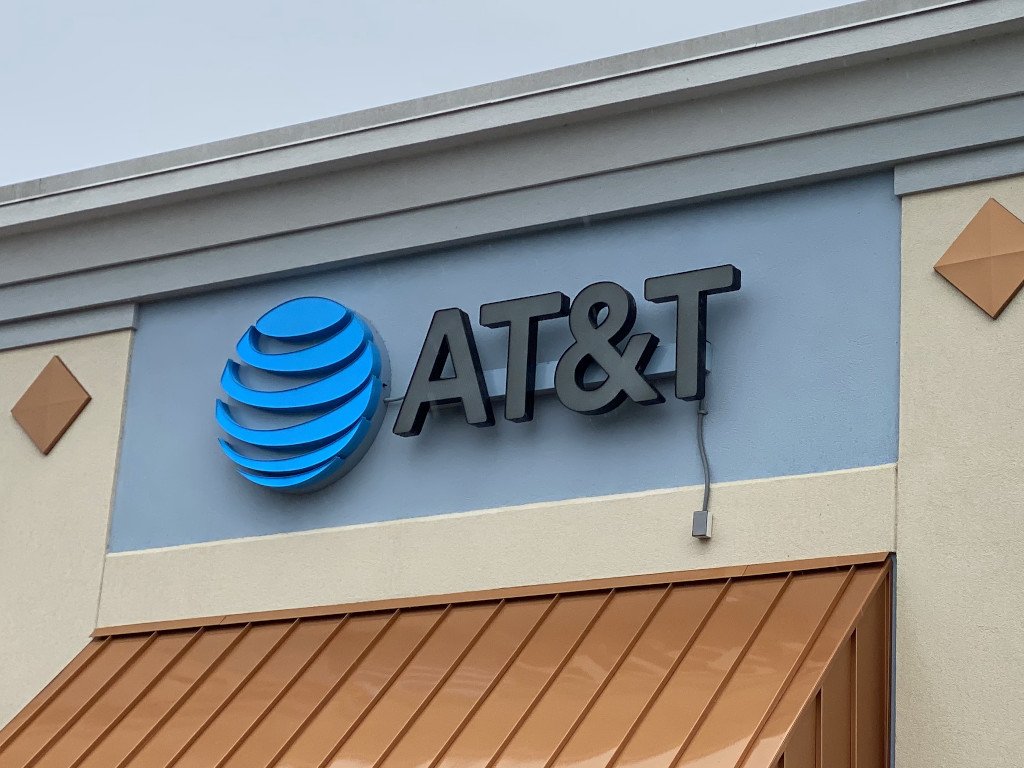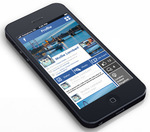Nubia Watch Review - Android
Up for review today is the Nubia Watch, a wraparound wearable that features a 4-inch flexible display. How does it fare in an increasingly crowded space that’s dominated by the likes of Apple and Fitbit? Read on to find out.
Design
The unique form factor of the Nubia Watch is what truly makes it stand out in the world of wearables. Thanks to its 4.01-inch 960 x 192 flexible AMOLED display which is certainly eye-catching. Never have I used a smartwatch before which literally wraps around my wrist giving me so much screen real estate.
Unfortunately, a good portion of that wrap-around screen is on the backside of your wrist, and goes unused. It still looks cool to see the images on the display fade away into the distance, but ultimately, it serves no purpose if you can’t see what’s over there.

With a four-inch curved display, it’s no surprise that the Nubia Watch comes off as a little bulky. However, despite the substantial size of the Nubia Watch, it still comes off as stylish, thanks to the design of the ceramic and stainless steel body. If I had to sum up its style in a couple of words, I’d go with industrial elegance.
I’ve worn my share of oversized smartwatches over the years, and it’s difficult to make something this large, yet modern and fashionable at the same time. Nubia did a fantastic job creating a massive smartwatch that looks stylish enough that I wouldn’t mind wearing it day-to-day.

On the question of durability, the watch itself feels solid but I’m definitely concerned about the display. I’m not sure how well the screen would live up to scratches or an impact. I fear it would not stand up to much abuse if you’re an active person or prone to bumping into things. However, I didn’t put any of these to the test and I’m typically very careful with my electronics in general.
User Experience
So, you’re probably wondering, is it comfortable to wear? Surprisingly, it is extremely comfortable. Initially, I was concerned about the weight and overall bulk of the Nubia Watch, especially because it includes a sleep tracking feature. I thought to myself, how am I ever going to sleep with something this massive on my wrist? Fortunately, it wasn’t an issue.
Next, I’m sure you’re curious about how useful this oversized four-inch display is. In short, not very. I had such high hopes about being able to read and reply to emails and messages using the Nubia Watch. Yet, all those hopes were dashed after I began to check my first few notifications that came through on the watch.

Unfortunately, notification support is extremely limited on the Nubia Watch. With some notifications, you can barely see a few words, while other notifications allow you to read the entire message. Even worse, the only option you have is to close it out, there is no way to reply to your notifications.
It’s disappointing, because what should have been the biggest benefit and selling point of the Nubia Watch, is sadly missing in action. Also, when you dismiss a notification on your watch, it doesn’t do the same on your phone. Meaning, you’re still going to have to deal with that notification again, once you pick up your phone.
As for what the Nubia Watch does well, it’s a semi-decent fitness tracker in an enormous body. It tracks your steps, heart rate, sleep, and exercise. While the sleep and step tracker work well and have decent support in the app, the heart rate tracker doesn’t appear to monitor 24 hours a day and there are only four exercises to choose from in the Sports app. Yet again, another area the Nubia Watch comes up lacking, unfortunately.
The Nubia Watch is also good at making phone calls, again with some caveats. Even though there is a nice large dialer to place calls, they are made using your phone, which means this isn’t a standalone device and you’re going to need your phone on you.

Another thing that bothered me was the always-on display. With the Nubia Watch, it gives you the full-blown display at regular brightness. This is a far cry from what you get on most wearables when the always-on display is enabled.
Typically, the brightness of the display is lowered and only the essential data is shown on the screen. I actually prefer that, because with every element showing at full brightness, the Nubia Watch is very distracting. Plus, it significantly shortens the battery life, and any touch could have you accidentally opening apps or notifications.

It would have been far better to use a more limited always-on display option. Alternatively, the Nubia Watch could have only lit up when a notification comes in displaying it for you to see, or they could have allowed you to schedule when the always-on display would be active. Any or all of these would have been a huge improvement to the user experience.
Additionally, I was unsatisfied that I was only able to view the time in the 24-hour format. It’s not that I cannot read time in this format, but I much prefer the 12-hour clock format using AM and PM.

Finally, there is no voice assistant support on the Nubia Watch. If you find yourself using Google Assistant or Alexa on other wearables, this could be the final deal-breaker for you.
I wish I had more positive things to say about the Nubia Watch, because I was so excited to try out this new form factor, but the software appears to be the weak link here. It makes me curious as to how well the Nubia Watch would work if it ran Wear OS, given its tighter integration with Android and access to more apps. Then again, it might not make much of a difference if the OS and apps weren’t built to take advantage of the larger-than-life display.
Performance

The Nubia Watch uses a pretty ancient Snapdragon Wear 2100 chip paired with a healthy 1GB of RAM. In my experience, performance was silky smooth, and that’s more than you can say for many Wear OS smartwatches. Much of this can probably be attributed to the fact that the Nubia Watch doesn’t do a whole lot. There just aren’t many apps to use, but at least when you do use them they’ll open quickly.
Battery
Nubia rates the battery life at up to 7 days, and I’d say that’s not far off. You wouldn’t think a smartwatch with a screen this massive could get anywhere near the 5 days I was seeing, but maybe that’s because I didn’t use it much.

When the app selection is so limited and you can’t see or interact with your notifications, there just isn’t much of a reason to look at the screen for an extended amount of time. Furthermore, the always-on display was either all or nothing, so I went with nothing most of the time.
That in itself could dramatically increase the battery life of a wearable device, and I’m almost certain it’s why the 425mAh battery was able to last so long.
Final Thoughts

In the end, you have to ask, what does the Nubia Watch do better than other wearables? Unfortunately, the answer is nothing. Even budget fitness bands like the Amazfit Band 5 are better fitness trackers collecting more stats with a better app, and it has support for Alexa built-in.
On the Wear OS side of things, smartwatches like the new Mobvoi TicWatch Pro 3 GPS provide much better integration with notifications while also offering up improved health tracking with a better app.
Overall, what makes the Nubia Watch stand out most is the sheer size of its display, and even that isn’t fully utilized. I really hoped the Nubia Watch would shake things up in a stale wearables market by doing something unique with its form factor. Instead, I found myself with a larger-than-life display on my wrist with nothing to show on it.

I’m still glad something like the Nubia Watch exists; we need more innovation in the wearables market. If anything, it showed me that you need good software or else your hardware goes to waste, no matter how inventive it might be.
The Nubia Watch can be purchased for about $220 from the Nubia website.
12/03/2021 10:00 PM
Chrome 89 Android Is Better In All The Ways, Intros Freeze-Dried Tabs
12/03/2021 05:50 PM
Google Has Big Plans For The Upcoming Pixel 5a
12/03/2021 02:04 PM
AT+T's network is adding C-Band 5G and 3 million new fiber locations
12/03/2021 05:03 PM
Facebook is using AI to understand videos and create new products
12/03/2021 08:21 PM
OPPO May Launch A Foldable Smartphone Sooner Than You Think
12/03/2021 11:00 AM
The Samsung Galaxy A52 5G and A72 prices get tipped, pretty affordable
12/03/2021 09:44 AM
Pakistan bans TikTok again for hosting 'obscene' content
12/03/2021 02:20 AM
Forgotton Anne is a forgotten mobile game that deserves to be revisited
12/03/2021 04:15 PM
- Comics
- HEALTH
- Libraries & Demo
- Sports Games
- Racing
- Cards & Casino
- Media & Video
- Photography
- Transportation
- Arcade & Action
- Brain & Puzzle
- Social
- Communication
- Casual
- Personalization
- Tools
- Medical
- Weather
- Shopping
- Health & Fitness
- Productivity
- Books & Reference
- Finance
- Entertainment
- Business
- Sports
- Music & Audio
- News & Magazines
- Education
- Lifestyle
- Travel & Local




